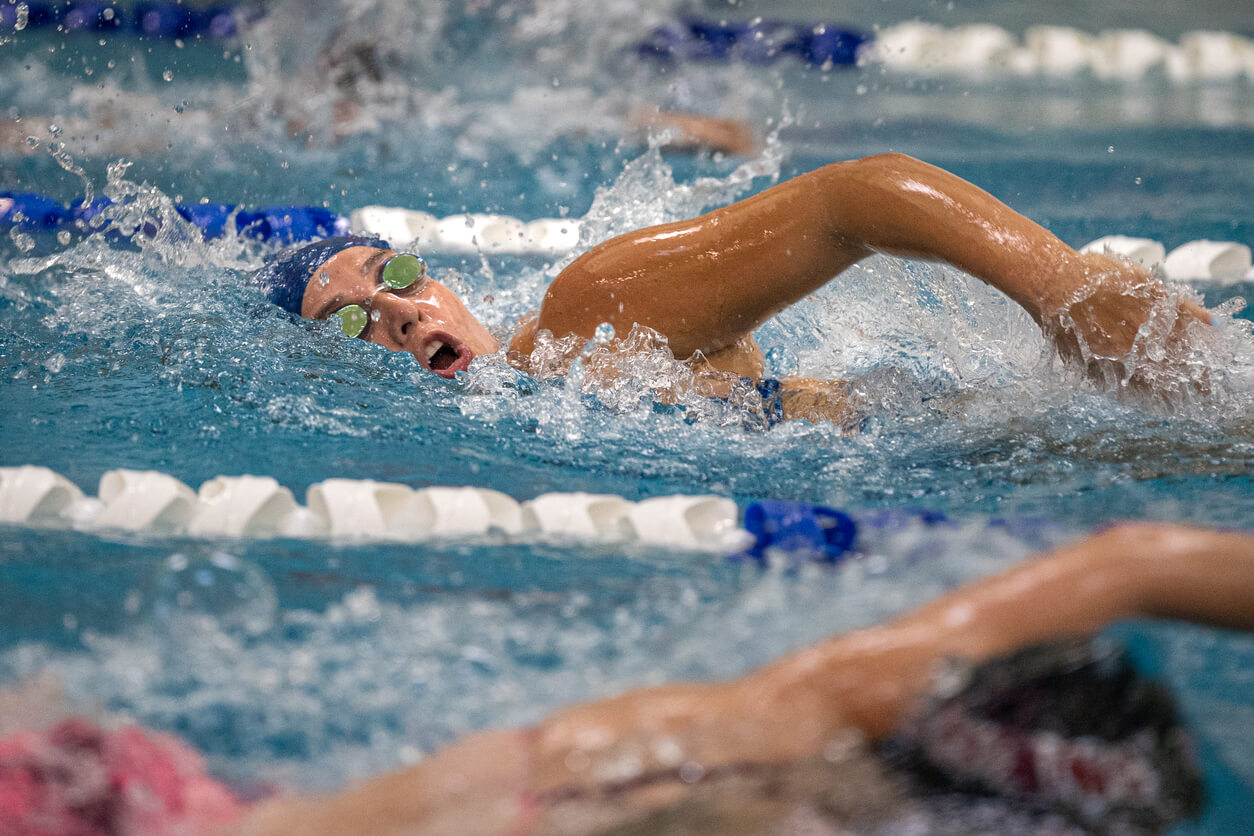Now that it’s summer again, and pandemic restrictions have greatly diminished, many of us are gleefully getting back into the water. Although swimming is often thought of as a relaxing activity, swimmers get their share of muscular and joint injuries. At Long Island Spine Rehabilitation Medicine, we see patients throughout the year who have suffered pain and dysfunction as a result of swimming injuries. Fortunately, we are well-prepared to offer them a prompt diagnosis and effective treatment.
Serious swimmers typically learn early on to engage in warm-up exercises to ready their bodies for vigorous activity and loosen their muscles and joints for flexibility. Even so, an occasional missed stroke, pre-existing stiffness, or overuse may cause a swimmer to suffer an injury that requires medical attention.
Common Swimming Injuries
Though the whole body is involved in the process of swimming, most swimming injuries affect the neck, back, knees and shoulders. Common swimming injuries our doctors treat include:
- Shoulder tendonitis or tears
- Rotator cuff impingement
- Cartilage tears around the shoulder socket
- Shoulder instability
- Breaststroker’s knee
- Lower back disc problems
- Stiffness and strain of the neck
- Bicep tendonitis
- Knee stress — pain around the kneecap or under the knee
Swimming injuries are often caused by repetitive stress on a particular joint, and the location of the injury frequently depends on which stroke is used most. For example, breaststrokers commonly develop hip pain and neck pain because of the strong frog-leg kicks and repeatedly lifting the head to breathe. Swimmers who use the butterfly stroke, on the other hand, commonly suffer rotator cuff injuries due to the powerful thrusting of their shoulders.
Whichever type of swimming injury you suffer, the well-trained physiatrists at Long Island Spine Rehabilitation Medicine have the well-honed skills and cutting-edge equipment to:
- Accurately diagnose your problem
- Relieve your pain
- Offer you various options of nonsurgical treatment
- Help you to learn how to prevent future injuries
Causes of Swimming Injuries
In many cases, swimming injuries are the result of inadequate training or training too much without sufficient rest periods. Improper techniques or beginning a vigorous training program without enough strength and development can lead to pain and dysfunction. Patients often come to us with problems that could have been avoided if they had done the following before undertaking a rigorous swimming regimen:
- Learned proper stroke mechanics
- Developed better breathing technique
- Increased flexibility and range of motion
- Strengthened rotator cuffs and scapular (shoulder blade) muscles
- Strengthened abdominal muscles and quadriceps (thigh muscles)
- Increased core body strength for stability
- Increased hip muscle strength
Of course, we don’t mean to imply that all swimmers are training for gold medals. Much more frequently, someone who hasn’t swum for many months, or even years, jumps into the water and pushes her/himself to swim 20 laps, then suffers the consequences.
How Our Physiatrists Can Help You Heal Quickly
The sooner you get in touch with us, the sooner we can get to the cause of your pain and alleviate it. We have numerous methods at our disposal, including:
- Customized physical therapy
- Acupuncture
- Platelet-Rich Plasma (PRP) to promote healing
- Injections to relieve pain and inflammation directly at the source
- PEMF (Pulsed Electromagnetic Field) therapy to decrease pain & inflammation and increase blood flow to promote more rapid healing
Contact Us Today to Get Back into the Swim
If you have suffered a swim-related injury, contact one of our conveniently located Long Island offices immediately to make an appointment. We will diagnose and treat your problem efficiently and effectively so that you can get back in the water and enjoy the season to the fullest.
